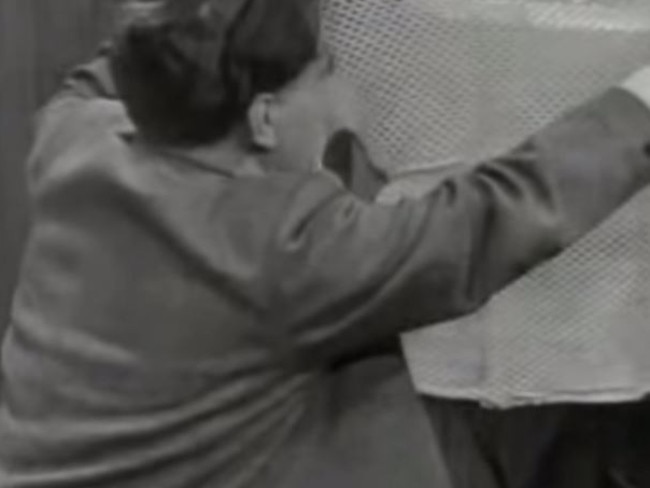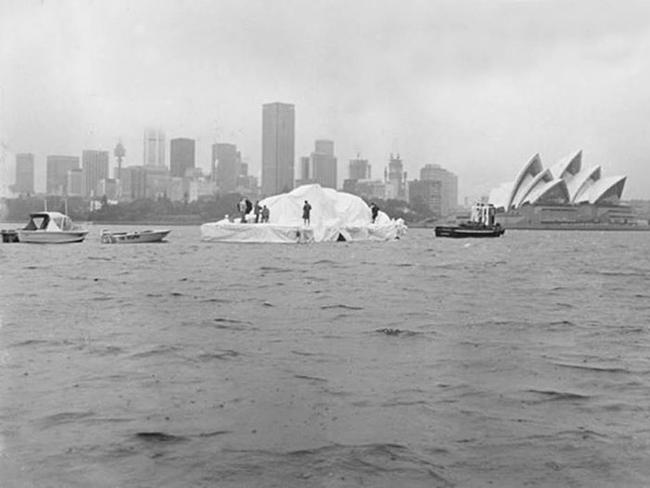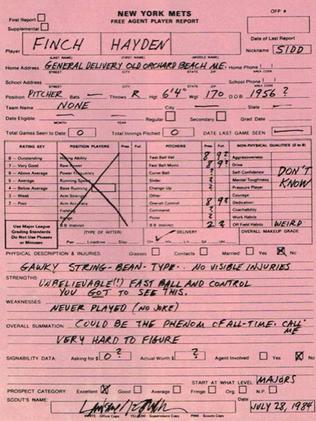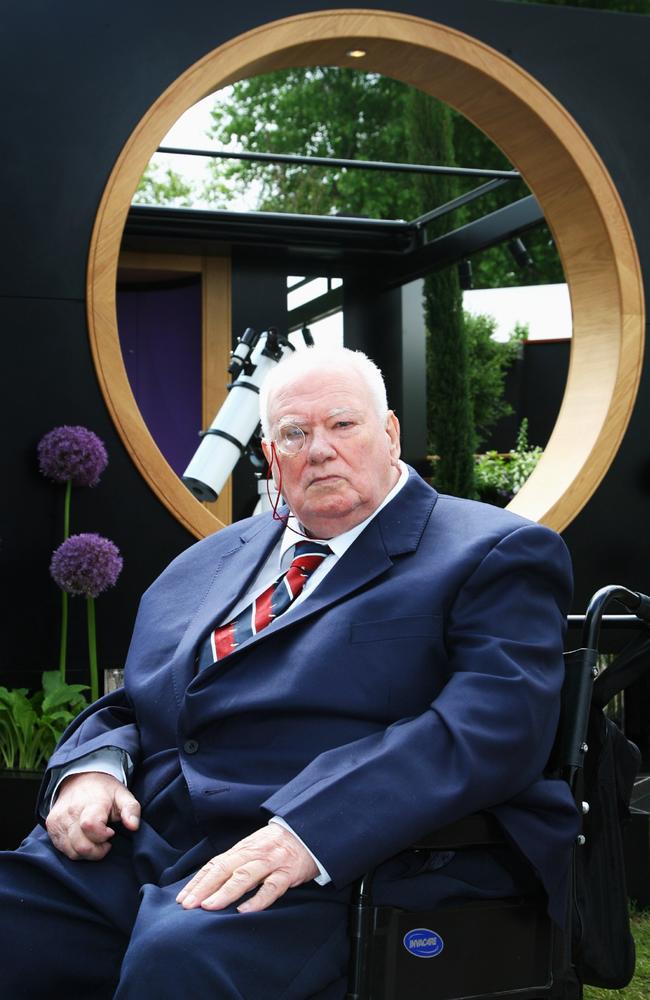Ten of the best April Fool’s Day pranks
IT’S April Fool’s Day today and what better way to start you thinking of the best pranks to pull with 10 all-time classics that fooled millions.

IT’S April Fool’s Day today and what better way to start you thinking of the best pranks to pull with 10 all-time classics that fooled millions.
1) April 1, 1957: As usual, the BBC broadcast its highly regarded current affairs program, Panorama, narrated by the distinguished broadcaster, the late Richard Dimbleby.
It should be remembered that in 1957 spaghetti was not a widely-eaten food in the UK and considered an exotic delicacy.
In a three-minute segment, the program featured a family from Ticino in Switzerland, carrying out their annual spaghetti harvest. It showed women carefully picking strands of spaghetti from a tree and laying them in the sun to dry.

Dimbleby told viewers that the end of March is a very anxious time for spaghetti harvesters all over Europe as severe frost can impair the flavour of the spaghetti. He also explained how each strand of spaghetti always grows to the same length thanks to years of hard work by generations of growers.
Some viewers called the BBC to find out where they could get their own spaghetti bushes. This prank is voted the all-time best by website Museum of Hoaxes.
BEST APRIL FOOL’S DAY PRANKS IN 2014
COMMENT BELOW: PRANK OR PRANKED? TELL US WHAT HAPPENED
2) April 1, 1962: Sweden’s SVT (Sveriges Television) brought its technical expert, Kjell Stensson, onto the news to inform the public that, thanks to new technology, viewers could convert their existing sets to display colour reception. At the time, there was only the one TV channel in Sweden, and it broadcast in black and white, so this was major news.
Stensson explained that all viewers had to do was pull a nylon stocking over their TV screen, and the mesh would cause the light to bend in such a way that it would appear as if the image was in colour. He proceeded to demonstrate the process.
Thousands of people were taken in.

Many Swedes today still report remembering their fathers rushing through the house trying to find stockings to place over the TV set. Regular colour broadcasts began in Sweden on April 1, 1970.
3) April 1, 1996: Taco Bell took out a full-page advertisement in six major newspapers — The New York Times, Washington Post, USA Today, Chicago Tribune, Dallas Morning News and Philadelphia Inquirer — announcing it had bought the Liberty Bell, an iconic symbol of American independence, and was renaming it the Taco Liberty Bell.

In addition to the advertisement, Taco Bell issued a nationwide press release stating that the Liberty Bell would divide its time between Philadelphia and Taco Bell’s headquarters in Irvine, California.
It compared the purchase of the Liberty Bell to the adoption of roads by corporations. Taco Bell said that it was simply “going one step further by purchasing one of the country’s greatest historic treasures.”
The company boasted, “Taco Bell’s heritage and imagery have revolved around the symbolism of the bell. Now we’ve got the crown jewel of bells.”
Outrage was immediate and widespread. Hundreds called the National Historic Park in Philadelphia where the bell was housed to express their anger and Taco Bell was inundated. The furore reached the White House where press secretary Mike McCurry when asked about the sale, responded that the Lincoln Memorial had also been sold. It would now be known, he said, as the Ford Lincoln Mercury Memorial.
At noon, Taco Bell issued a second press release admitting it was a hoax and adding it would donate $50,000 towards the Liberty Bell’s preservation.
4) April 1, 1974: Residents of Sitka, the only town in southeast Alaska, awoke to see Mount Edgecumbe, a volcano dormant for 400 years on nearby Kruzof Island, look as if it was about to blow, with a thin stream of black smoke rising from the crater.

The 8000 residents spilt out of their homes in disbelief and shock. Calls poured in to local authorities in fear the volcano was about to erupt. Oliver ‘Porky’ Bickar, the instigator of the elaborate prank, had let aviation authorities and the police in on his ruse but forgot to tell the Coast Guard, which has a base in Sitka.
The Coast Guard commander radioed his Admiral in Juneau, Alaska, who ordered a helicopter be sent out to investigate. As the Coast Guard pilot approached Mt Edgecumbe, the plume of smoke grew in size. When he got his chopper right above the volcano, he looked down into the crater. At first, he did not believe what he was seeing. Then he looked more closely, and laughed. Stacked in the cone of the volcano, burning with a greasy flame, was a huge pile of old tyres. And spray-painted in the snow beside the tyres, in 15-metre (50 feet) high letters, were the words “April fool.”
Bickar, a 50-year-old resident of Sitka, had sat on his prank for three years waiting for a clear April 1st dawn. When it finally came, in 1974, he put his plan in motion. Local pilot Earl Walker flew 70 old car tyres to Mt Edgecumbe and dropped the tyres in the crater, dousing them in kerosene and setting them alight.
The news was picked by the Associated Press and ran in papers around the world. Alaska Airlines ran his prank in an advertising campaign the following year.
5)April 1, 1978: “We are going to float an iceberg from Antarctica into Sydney Harbour, ”said adventurer and entrepreneur Dick Smith. He added that when the iceberg reached the harbour he was going to carve it into small ice cubes and sell them as ultra pure “Dicksicles”, which he promised would improve the flavour of any drink.

Slowly the iceberg made its way into the harbour. Radio stations provided blow-by-blow coverage of the scene. Only when the iceberg was well into the harbour was its revealed as a prank. It started to rain, and the firefighting foam and shaving cream that the iceberg was really made of washed away, uncovering the white plastic sheets beneath.

6) April 1, 2010: Global camera corporation Kodak stated that Dr Harold Museau had invented Aromatography, in which it had devised how to use a camera’s sensor to capture smells in a photograph (be it baked goods, flowers or a wet dog).
Dr Museau stated that recent breakthroughs in Neuro-Optic-Nasal-Sense Imaging (often referred to as NONSense) had enabled the technology, which was also being researched by other camera corporations.
Its full statement was: “Proprietary imaging algorithms create an array of pixels, undetected by the conscious mind, that trigger reactions in the synapses along optic neural processing pathways within the brain to create, the olfactory equivalent of a optical illusion. The nose does not actually detect anything, but the mind experiences the aromas as if they were real. Interestingly, our tests have found that humans have an innate need to ‘sniff’ when experiencing Aromatized images even when fully aware that nothing is actually there for their nose to detect.”

Kodak anticipated its technology would soon be applied to video devices, creating Smellevision.
However, Kodak cautioned that not everyone could smell the images.
“Emerging trends indicate a significantly greater response among subjects born in the months between May and June.”
7) April 1, 2008: The Flying Penguins documentary, hosted by Monty Python star Terry Jones, was an episode of the BBC’s natural history series, Miracles of Evolution. It showed remarkable footage of penguins flying — camera crews had discovered a colony of Adélie penguins while filming on King George Island, 1200km south of the Falkland Islands.

“We’d been watching the penguins and filming them for days, without a hint of what was to come,” Jones said in publicity before the show.
“But then the weather took a turn for the worse. It was quite amazing. Rather than getting together in a huddle to protect themselves from the cold, they did something quite unexpected, that no other penguins can do.”
Jones said the penguins took to the air and flew thousands of kilometres to the rainforests of South America where they “spend the winter basking in the tropical sun.”
It was used to promote the BBC iPlayer and the video is one of the most watched on the internet.
8) April 1, 2009: Google, which has been pulling pranks on users since Google MentalPlex in 2000, came up with a new Android app Google Translate for Animals (in conjunction
with the Bodleian Library) that could decipher what your pet was trying to tell you.
“Making the world’s information universally accessible is a key goal for Google. Language is one of our biggest challenges so we have targeted our efforts on removing language barriers between the species,” Google said in its statement.
“We are excited to introduce Translate for Animals, an Android application which we hope will allow us to better understand our animal friends. We’ve always been a pet-friendly company at Google, and we hope that Translate for Animals encourages greater interaction and understanding between animal and human.
“Translate for Animals is an application for Android phones that recognises and transcribes words and phrases that are common to a species, like cats for example. To develop Translate for Animals, we worked closely with many of the world’s top language synthesis teams, and with leaders in the field of animal cognitive linguistics, including senior fellows at the Bodleian Library in Oxford.”
Google said the app allowed you to understand all sorts of animals’ barks, mews, grunts, and cheeps. It also supplied a video too that has been seen nearly two million times.
9) April 1, 1985: Sports Illustrated published one of its most famous articles. George Plimpton wrote an article about Sidd Finch, Sidd, short for Siddhartha, the Indian mystic in Hermann Hesse’s book of the same name), could reportedly pitch a baseball at 270kmh (168mph) with pinpoint accuracy — the previous fastest recorded speed for a pitch was 166kmh (103mph).

Finch had never played baseball before. Raised in an English orphanage before being adopted by archaeologist Francis Whyte-Finch — who was later killed in an aeroplane crash in the Dhaulaglri mountain region of Nepal. Finch briefly attended Harvard before going to Tibet to learn the teachings of the “great poet-saint Lama Milaraspa” and mastering ‘siddhi, namely the yogic mastery of mind-body.’ Through this, Finch ‘learned the art of the pitch.’


Finch showed up at a New York Mets camp in Florida, and impressed sufficiently to be invited to a training camp. When pitching he looked, in the words of the catcher, ‘like a pretzel gone loony.’ Finch frequently wore a hiking boot on his right foot while pitching, his other foot being bare. His speed and power were so great that the catcher would only hear a small sound, ‘a little pft, pft-boom,’ before the ball would land in his glove, knocking him nearly a metre backwards. A player declared that it was not “humanly possible” to hit Finch’s pitches.
Finch though, the article stated, had not yet decided to commit to a baseball career as he was also interested in playing the French horn. He told Mets management he would decide his career on April 1.
Within the story Plimpton left huge hints it was a hoax. The date — April 1; the story itself and the article’s sub-heading: ‘He’s a pitcher, part yogi and part recluse. Impressively liberated from our opulent lifestyle, Sidd’s deciding about yoga — and his future in baseball.’ The first letter of each word, together, spells H-a-p-p-y-A-p-r-i-l-F-o-o-l-s-D-a-y.
Sports Illustrated received over 2000 letters about Sidd Finch and the story became a major talking point among US baseball clubs as both the New York Mets and several players were in on of the hoax. On April 8’ the magazine claimed Finch told a press conference that he had lost the accuracy needed to throw fastball and would not follow a baseball career. On april 15, Sports illustrated admitted the story was a hoax.
However, Old Orchard Beach baseball team in Maine, New England, invited Finch to its annual banquet. They receivede this reply: “The challenge is reaching the Eightfold Path of right belief or the ninth inning with the proper relief. May you have peace of mind.”
10) April 1, 1976: In an early-morning interview on BBC Radio 2, the English amateur astronomer, the late Sir Patrick Moore, announced that at 9:47am on April 1 a once-in-a-lifetime astronomical event would occur.
Pluto would pass behind Jupiter, in relation to the Earth, and the planetary alignment would temporarily counteract and lessen Earth’s own gravity. Moore told listeners that if they jumped in the air at the exact moment the alignment occurred, they would experience a strange floating sensation.

When 9:47am arrived, BBC Radio 2 receivedg hundreds of phone calls from listeners claiming to have felt the sensation. One woman from Utrecht, the Netherlands, said that she, her husband and her 11 friends, had risen from their chairs at a table and floated around the room. The table floated too.
A male caller demanded compensation after he claimed that he had risen so rapidly that he hit his head on the ceiling.
Moore had meant for his announcement to point out the idiocracy of a pseudoscientific theory that had been promoted in a book. The Jupiter Effect, alleging that a rare alignment of the planets was going to cause massive earthquakes and the destruction of Los Angeles in 1982.



